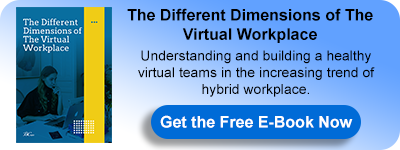Virtual Teams: What does Science Have to Say?
Advanced Workplace Associates looked at the science of managing remote teams in 2015. They collaborated with the Center for Evidence-Based Management (CEBMa) in Amsterdam to conduct a rapid evidence assessment (REA), which included a critical examination of 750 academic research from around the world. We may discover the truth about the elements that make the most difference to the performance of people, teams, and communities using a virtual model by searching the world's most significant studies on the subject.
The REA method looks at research on specific search terms, filters it for relevance, then scores the studies on robustness and bias. In the end, it provides us with the answers to our questions. CEBMa re-ran the study in 2020 to update the research and incorporate the most recent findings in light of COVID-19 and the imposition of home-working.
According to the study, many of the same elements that influence community effectiveness in traditional office-based companies apply to virtual communities to an even larger level. The distinction is that they are more difficult to produce without intentional effort from both leaders and members due to distance and time slicing. Without attention, virtuality can lead to poor performance over time in companies whose performance in these areas is already lacking.
The pillars that create a psychologically secure workplace in which people can thrive are social cohesiveness, perceived supervisory support, information exchange, vision and goal clarity, external Communication, and trust. According to the findings, three of these factors—trust, social cohesiveness, and information sharing—are put under additional strain in virtual working environments.
Social Cohesion
Business friendliness is defined as feeling at ease enough to say hello and have a cup of coffee. Forming strong work relationships helps us willingly share our expertise, provide emotional support, and engage in intellectually demanding debates without feeling challenged or insulted. It's a lubricant that allows us to deal with difficult or tense situations.
Many teams, managers, and leaders struggle to maintain social cohesion. There is a shortage of congeniality in many office environments. Leaders frequently regard this characteristic as a luxury rather than a necessary component of success. As a result, when a team adopts a more virtual approach, the relationships that hold organizations together may deteriorate unless an investment is made in promoting friendships.
Information sharing and trust
Positive business connections require a high level of trust. Its presence fosters an environment where people can share their knowledge and information. People can open up and communicate sensitive information when they have emotional confidence in their colleagues and managers. Trust in the expertise and the accuracy of information boosts member confidence and fosters teamwork. Trust flows in two directions: horizontally among team members and vertically between employees and their boss.
1Forbes, 17 Jun 2020, Andrew Mawson, The Science Behind Managing Virtual Teams, Accessed 29 Jan 2022, https://www.forbes.com/sites/amawson/2020/06/17/the-science-behind-managing-virtual-teams/?sh=882d8b020239
For more about this topic, download our latest book " The Different Dimensions of The Virtual Workplace " for FREE:
